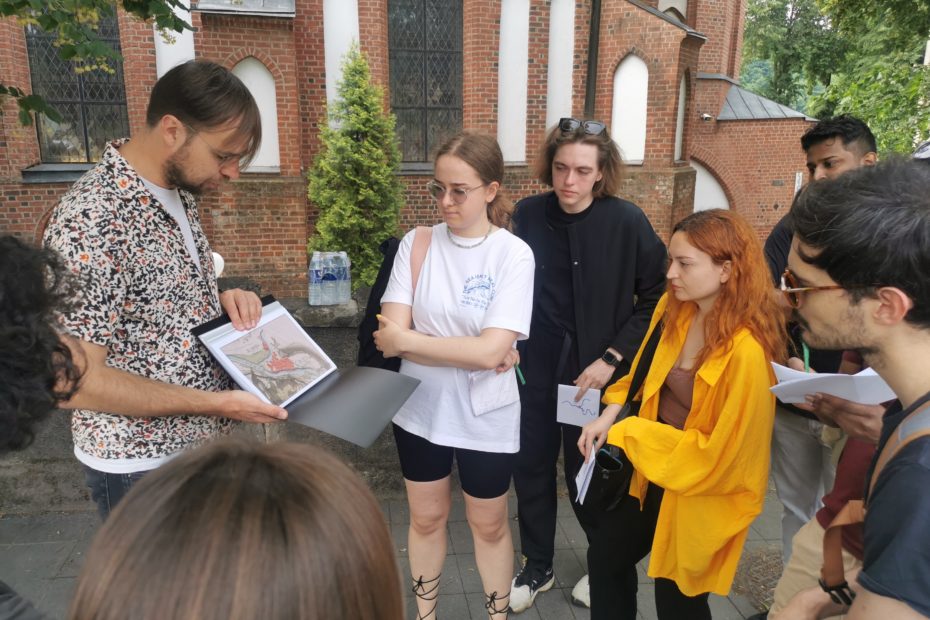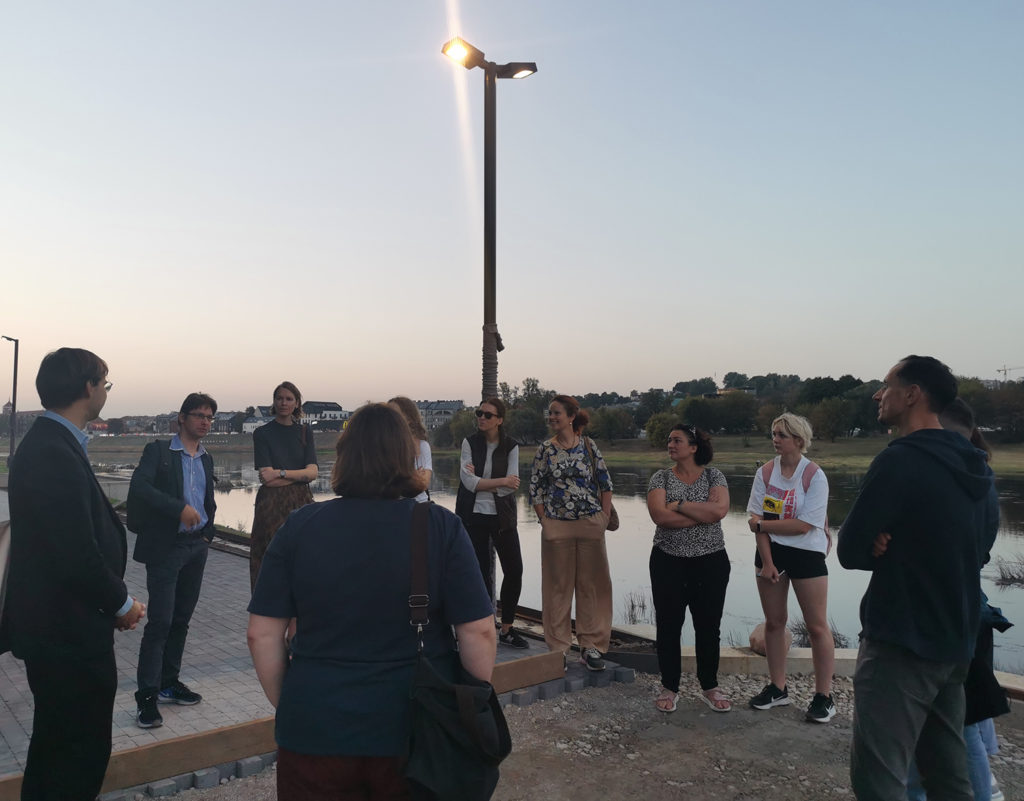Events in Lithuania
Karalius Mindaugas AV. Walkscape (Lithuania, Kaunas)
About the event:
Karalius Mindaugas Avenue is one of the main transportation arteries in Kaunas, where busy city life takes place – it is an important transit route that is regularly used by public buses and trolleybuses, as well as private vehicles. The street is also densely populated: there are many residential buildings as well as commercial establishments, shops and restaurants. One can even say that this is one of the main trade and business centers in Kaunas.
However Karalius Mindaugas avenue isn‘t a human space. Unfulfilled potential of the embankment, priority for transport instead of pedestrians, street structure that destroys the urban integrity by dividing a single cultural layer into several parts – these are some of the main problems of the street.
During this event participants went down the Karalius Mindaugas avenue and explore it‘s surroundings, listened to it‘s history. Walking – walkscapes – go hand in hand with public spaces and architecture. It‘s a way to raise public participation in urban space renewal. After the tour participants partook in the discussion regarding problems of Kaunas city center public space and river Nemunas separation, as well as possibilities for fulfilling the potential of the place.

Photo by Misael Silvera: Pexels
Relevant problems:
- Division of semantic layers. In one of the Karalius Mindaugas av. sides is the oasis of peace – Nemunas Island. The other side of the street is the historical part of the city: the old town and new town. Wide Karalius Mindaugas avenue divides these sides, thus dividing the whole structure of the city into several parts;
- Materialism as consumer culture. In Karalius Mindaugas av. a clear emphasis on materialism as consumption culture can be observed: commercial advertising, abundance of shops, as a result, promotion of consumption can raise questions about human values, lack of sustainability;
- The relation of nature. The high concentration of cars and business activities can raise questions about the relationship between humans and nature. Is this intensive urban model compatible with nature care and sustainability? How does this affect the conservation of ecosystems and natural life forms?;
- Traffic jams. Karalius Mindaugas Avenue is a very busy traffic route used by both cars and public transport. The high number of cars can cause traffic jams, especially during peak hours;
- Pedestrian safety. Although the avenue is a popular walking path, there are places where adequate pedestrian infrastructure may be lacking. There are not enough pedestrian crossings in certain areas or they are inconveniently placed, inaccessible;
- Drought problems. Sometimes a long drought can affect the health of the trees and the care of the greenery. This can cause drying and reduce the visual appeal of the street;
- Noise level. Due to the high traffic flow, Karalius Mindaugas avenue can be noisy, especially with a high number of cars and the intensity of public transport;
- Loss of community. Due to the large flow of people and shopping malls, there may be a feeling on the street that people are losing their personal identity and community ties. The street does not encourage mutual communication, stifling social, individual, mutual relations.
Interactive map of Walkscapes: Karalius Mindaugas AV. walkscape, H. and O. Minkovskiu str. walkscape


















Walkscape - H. and O. Minkovskiu str. (Lithuania, Kaunas)
On September 28th, Walkscapes project organized an excursion – a walk along H. and O. Minkovski Street. Participants explored the street spaces from a pedestrian perspective and discussed the challenges of implementing the planned extensive development of the district.
The walk began at the Aleksotas funicular access points. The tour guide, Algimantas Grigas, engaged participants in a narrative starting with the profession and life of the Jewish grain merchant Levin Minkovski in Aleksotas and his sons – Oskar and Herman, their achievements in the fields of medicine and mathematics, which brought fame to their name, hence the street is named after them. Herman, a mathematician who developed geometric number theory, taught A. Einstein, and Oskar, a pathophysiologist who identified that diabetes develops due to pancreatic pathology, a discovery that led to the invention of insulin.
Walking along H. and O. Minkovski Street, participants noticed newly built residential buildings – the district is undergoing gentrification, becoming prestigious home space.
Participants paused at the former Jewish synagogue and also stopped at Nemunas riverbank where a concert hall for Mikalojus Konstantinas Čiurlionis is expected to be built, along with a pedestrian bridge connecting Aleksotas and Nemunas Island.
During the excursion, participants had the opportunity to visit Nemunaičiai – a new mixed-use project (architect R. Paleko studio) area, see newly built residential buildings, the Nemunas riverside that will be open to the residents of Kaunas upon completion, learnt about planned leisure spaces, offices, infrastructure for transportation, as well as planned preservation of old historical structures – the remains of the port and the tower.
Participants explored the oldest industrial heritage, Aleksotas Mill, other old buildings for grain processing, and connecting railway lines.
In the end, participants visited the Old Aleksotas Jewish Cemetery, surrounded by railway tracks, not very visible to passersby but well-maintained.
This walk was made possible thanks to the “WALKSCAPES: URBAN RENEWAL THROUGH EDUCATION” project implemented by “eMundus.” For more information about the project, visit: event











